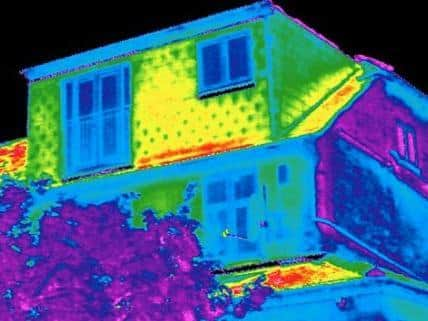Thousands of homes across Northamptonshire fall below energy efficiency targets...and homeowners could be saving hundreds of pounds
and live on Freeview channel 276
More than 111,000 homes in Northamptonshire fall below the Government's long-term target to make homes energy efficient, new research has revealed.
In Northampton, 41,122 homes with a recorded energy rating show they fall below the target, 15,037 homes in South Northamptonshire have an energy rating of between Band D and Band G, 18,469 in Kettering, 12,632 in Wellingborough, 10,423 in Corby and 14,169 in Daventry.
Advertisement
Hide AdAdvertisement
Hide AdOn average, around half of those homes with an energy rating are below government targets, according to new research by the BBC Shared Data Unit.


The figures show that many householders are spending hundreds of pounds more on energy bills and pumping tons more CO2 into the atmosphere than necessary. The research also shows that homeowners could save between £160 and £320 across Northamptonshire if they put in measures to make their homes more efficient.
An Energy Performance Certificate provides a grade between A and G for how efficient a property is. An A grade indicates lower energy costs and better insulative measures. A Grade G is at the other end of the scale. C is just above average.
The government had set a target of making all homes in England and Wales the equivalent of an Energy Performance Certificate (EPC) “C grade” by 2035, but critics say moves towards achieving that “have fallen off a cliff”. The number of homes across England and Wales in Bands D-G is more than 12 million.
Advertisement
Hide AdAdvertisement
Hide AdJenny Hill, team leader for buildings and International action Committee on Climate Change, said: “We need to implement a huge efficiency drive and switch away from a dependence on fossil fuels.
“There are 29 million homes, all of those need to retrofit energy efficiency measures and better forms of heating, and as we are looking to achieve this by 2050, that implies upgrading a million homes a year, but the current rate is 10 times less than that.
“It’s crucially important that we have an attractive package for householders. People are much more likely to consider energy efficiency measures when they move home or do renovations, for example we could reduce stamp duty on efficient homes.”
Peter Smith, director of policy and research at NEA, said that low-income earners were more likely to be living in low energy-efficient homes and improvements to those homes could save a ‘life-changing’ amount in fuel costs.
Advertisement
Hide AdAdvertisement
Hide Ad“At a high level - housing needs to become an infrastructure priority. There needs to be a push to improve all homes, but to do this it needs to have the same infrastructure priority as HS2 or building a third runway, rather than something delivered through departmental spending.”
Comment Guidelines
National World encourages reader discussion on our stories. User feedback, insights and back-and-forth exchanges add a rich layer of context to reporting. Please review our Community Guidelines before commenting.